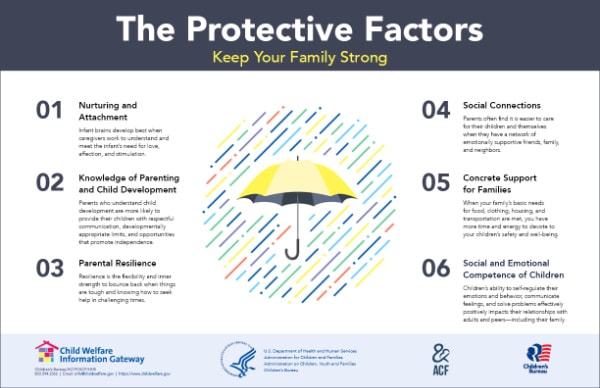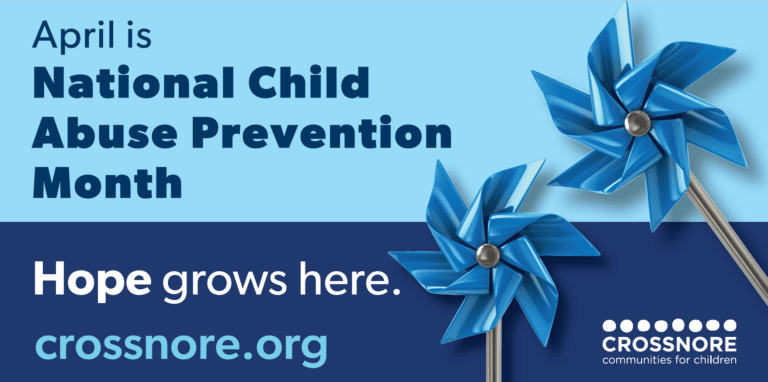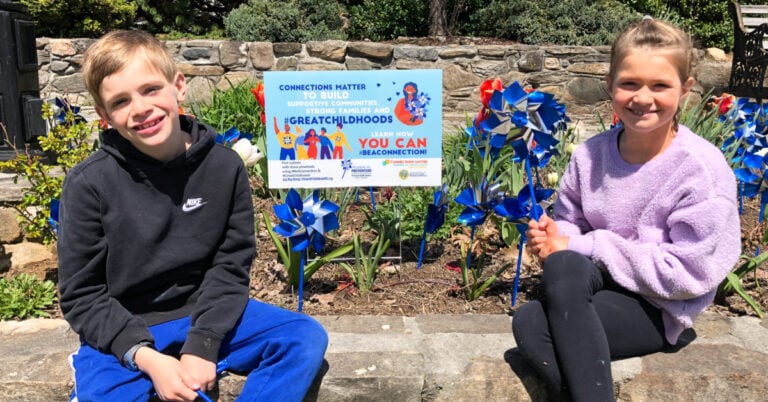This year marks the 40th year that April has been considered Child Abuse Prevention Month since its inception in 1983. Each year, millions of Americans across the nation participate in awareness events, campaigns, and fundraisers to support this cause.
In Federal Fiscal Year (FFY) 2021 alone, there were almost 600,000 reports of child abuse and neglect across the nation. The majority of those reports (76%) were reports of neglect. While the other 24% were a combination of physical abuse, sexual abuse, and sex trafficking. Child abuse and neglect include “at a minimum, any recent act or failure to act on the part of a parent or caretaker, which results in death, serious physical or emotional harm, sexual abuse or exploitation… or an act or failure to act which presents an imminent risk of serious harm.”
A Reframe for Action
Hearing the rate of child abuse each year can be overwhelming and can leave us feeling stuck. It’s hard to imagine proactive solutions to such a serious, pervasive problem. However, there are things we can do practically to prevent abuse. As a part of this year’s initiative, the Children’s Bureau is focused on enhancing protective abilities in families and their communities to prevent abuse. Rather than focusing on what must be stopped, we can focus on what should be started. I appreciate this reframe in thinking so we can each focus on how to take action differently.
“Child abuse prevention occurs at three levels: primary (directed at the general population), secondary (focused on families where risk factors are present), and tertiary (focused on families where maltreatment has already occurred).” Enhancing protective factors for families is a secondary and tertiary prevention approach. Helping families connect to resources, develop natural supports, and strengthen their coping skills can help them handle stressors related to parenting more effectively.
The Framework for Protective Factors
The Children’s Bureaus’ framework includes a focus on 6 protective factors: nurturing and attachment, knowledge of parenting for child and youth development, parental resilience, social connections, concrete supports for families, and social and emotional competence of children. These protective factors are not just for the individual parent in need. They are designed to provide communities and agencies a number of positive approaches to take with families. They are practical, tangible, and based in research. In other words, if used as intended, they can work.
Reflecting on our role
The Children’s Bureau also puts emphasis on how communities, organizations, and systems can influence families’ outcomes. These entities can either be barriers or catalysts to success. It’s important for us to assess how we show up for families in each of these roles. We need to ask questions, such as:
- What policies in place are helping, and which are doing more harm than good?
- Are we collaborating to effect change or are we working in silos?
- What does the data tell us about what’s working and what isn’t?
- How are the voices of families being represented?
When it comes to child abuse, it’s sometimes easier to think it’s someone else’s issue to address. This year, the challenge is to stop and reflect on how each of us has a role either as a barrier or a catalyst to preventing child abuse and neglect. I am hopeful that a reframe in this approach will be the starting point to a transformation over the next several decades of child abuse prevention.





